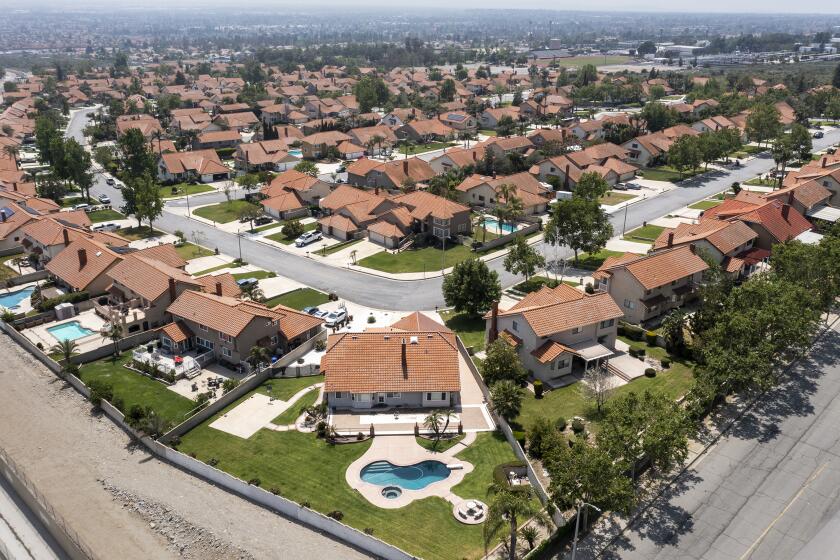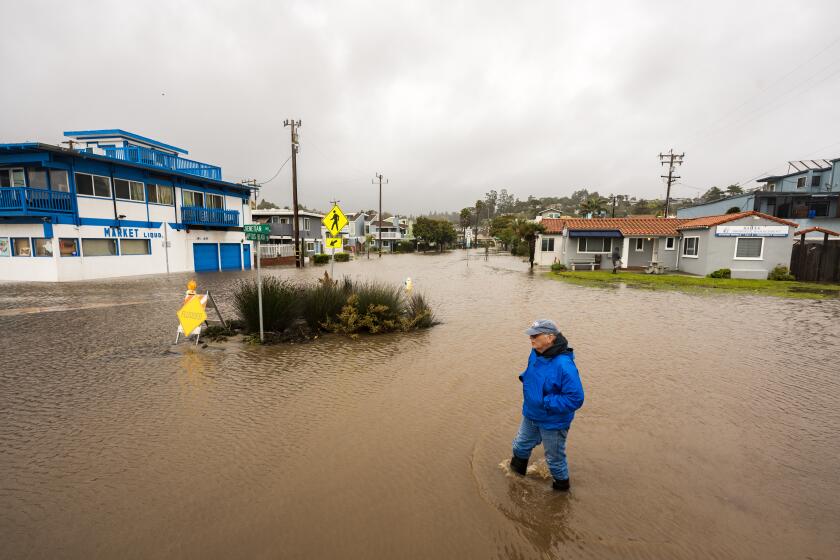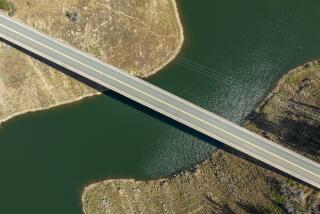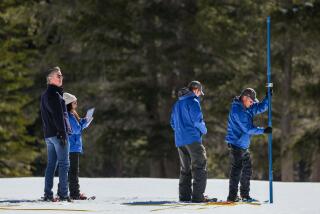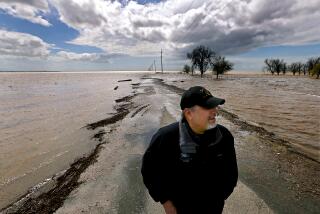Column: Newsom denies the obvious: California is no longer in drought
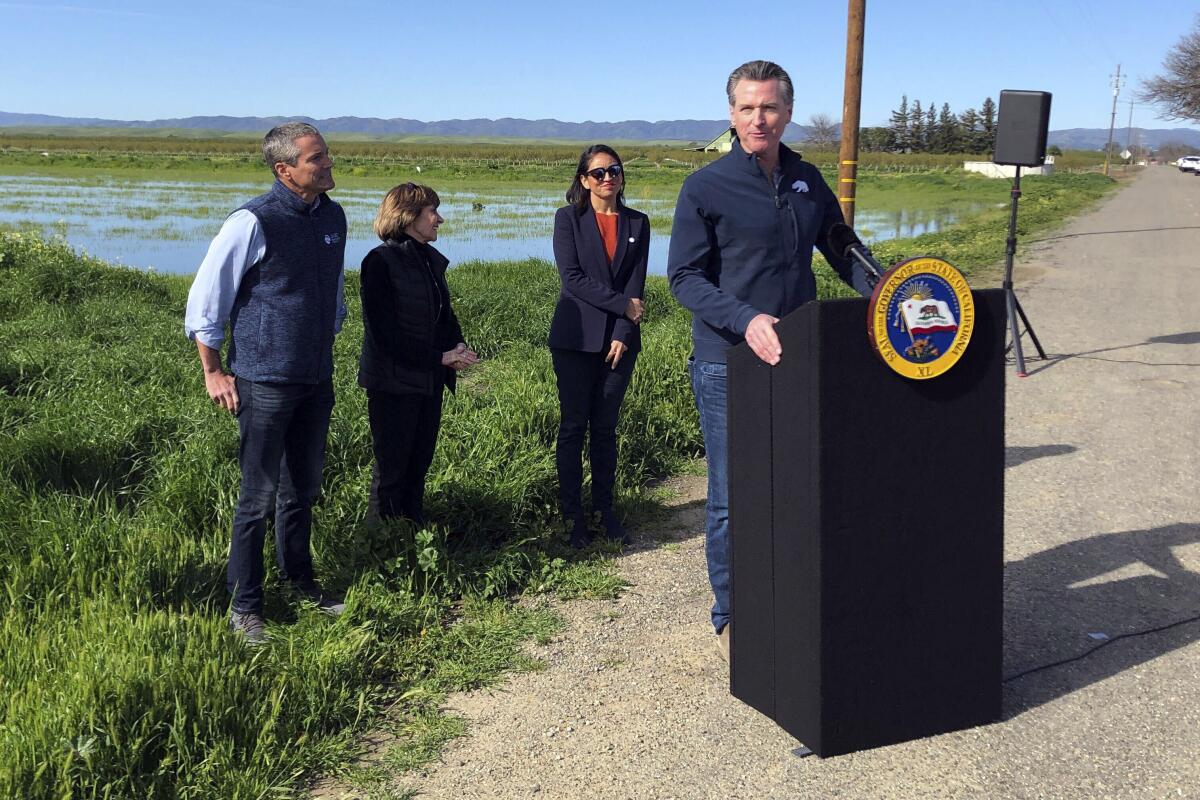
- Share via
SACRAMENTO — Gov. Gavin Newsom came close but couldn’t quite bring himself to say it: The drought’s over.
It’s disappointing when a governor won’t acknowledge what ordinary citizens already know because they can see things for themselves.
Another drought will emerge soon enough. It always does. That’s the California pattern — climate change or not.
But right now, the biggest threat this spring is flooding from rivers leaping their banks.
There’s just something about California governors and water officials that prevents them from admitting we’re through a dry spell and into a wet period.
They fear we’ll resume taking long showers and swamping our lawns. We’ll stop conserving water and go back to wasting it. So, they treat us like children, denying the obvious.
On Friday, Newsom and his water advisors stood on a Sacramento Valley farm flooded with storm runoff and pointed out that this has been one of California’s wettest winters on record. The Sierra snowpack is historically deep.
And we’re still in a drought?
Yes, Newsom asserted.
“Are we out of the drought? Is the drought over?” Newsom asked rhetorically in his opening comments at the farm, answering every attending reporter’s question before it was asked.
“It would be nice to have a governor say that the drought is over. But unfortunately, complication requires nuance.”
He said we’d just gone through “the three driest years in recorded history,” while conceding that the last three months were more like the Great Flood of 1862 when practically the entire Central Valley was a lake.
“It’s incumbent upon us to continue to maintain our vigilance … to allow for the fast-tracking of groundwater replenishment projects, stormwater capture and recycling programs,” Newsom continued.
Sure, but a California governor has vast powers. Why couldn’t he do all those things — expediting recovery from the last drought while preparing for the next — without asserting that the drought persists?
By the end of the event, Newsom seemed almost ready to utter the forbidden words. But he stopped short. The governor concluded by re-asking and re-answering the question:
“Are we out of the drought?
“Mostly but not completely.”
Newsom’s decision to rescind some of the most severe restrictions comes after drenching storms eased extreme drought conditions across the state.
Secretary Wade Crowfoot of the state Natural Resources Agency is a drought hard-liner. He noted that two parts of California — the Southeastern region that relies on Colorado River water and the Klamath Basin near Oregon — “continue to experience acute water shortages.”
“No,” he told reporters, “We’re not out of drought conditions.”
“If we declared the drought over and removed emergency provisions,” Crowfoot said, “we would be unable to quickly and effectively provide support where those conditions still exist.”
Why? It should be possible for state government to be honest about the so-called drought and still provide emergency help for communities that need it.
Play it straight with the public.
When government doesn’t level with people and they know it, they become even more cynical and tune out officials trying to lead them. If it’s raining buckets and we’ve got the thickest snowpack in decades, most people aren’t going to buy there’s still a drought.
“No one understands a continued drought declaration after the 12th atmospheric river,” says state Sen. John Laird (D-Santa Cruz), a former natural resources secretary.
Anyone who believes we’re stuck in a drought probably should look up the word.
The Glossary of Meteorology defines “drought” as “a period of abnormally dry weather sufficiently prolonged for the lack of water to cause serious hydrologic imbalance in the affected area.”
OK, we had three years of abnormally dry weather that caused a serious hydrologic imbalance. We now are having abnormally wet weather.
But the hydrologic imbalance persists in some areas, especially in aquifers that were irresponsibly depleted by farmers for decades. That doesn’t mean the drought persists. It just means we’ve got a water shortage underground — caused by drought and over-pumping — and in some hard-hit small communities.
We’re not in a drought. We’re recovering from one.
How can there be a simultaneous drought and flood in California?
Most of California’s surface is saturated.
As of late last week, Los Angeles’ precipitation for the season was 194% of normal — nearly twice the average. San Diego was at 149%, Bakersfield 161%, Fresno 183%, Sacramento 132%, San Francisco 153% and Redding 120%.
But in a few places, precipitation for the season was below average: Palm Springs was at 84% of normal and Mt. Shasta was only 21%.
Snowpacks, however, were epic: 228% of normal for the state. The runoff will be filling foothill reservoirs this spring.
Some surplus water will be poured across fallowed farm fields so it can soak into the ground and recharge sinking aquifers.
To Newsom’s credit, he has been trying to expedite the recharging by streamlining regulations, spending state money and making it easier for water districts and growers to replenish underground reservoirs.
That’s what took him to the Yolo County farm — to call attention to the landowner’s recharging project.
Newsom also rolled back some of the state’s toughest drought restrictions. And he announced that the State Water Project will greatly increase its planned summer deliveries to farms and cities — by more than double.
A governor couldn’t do that if we were still in a drought.
More to Read
Sign up for Essential California
The most important California stories and recommendations in your inbox every morning.
You may occasionally receive promotional content from the Los Angeles Times.
